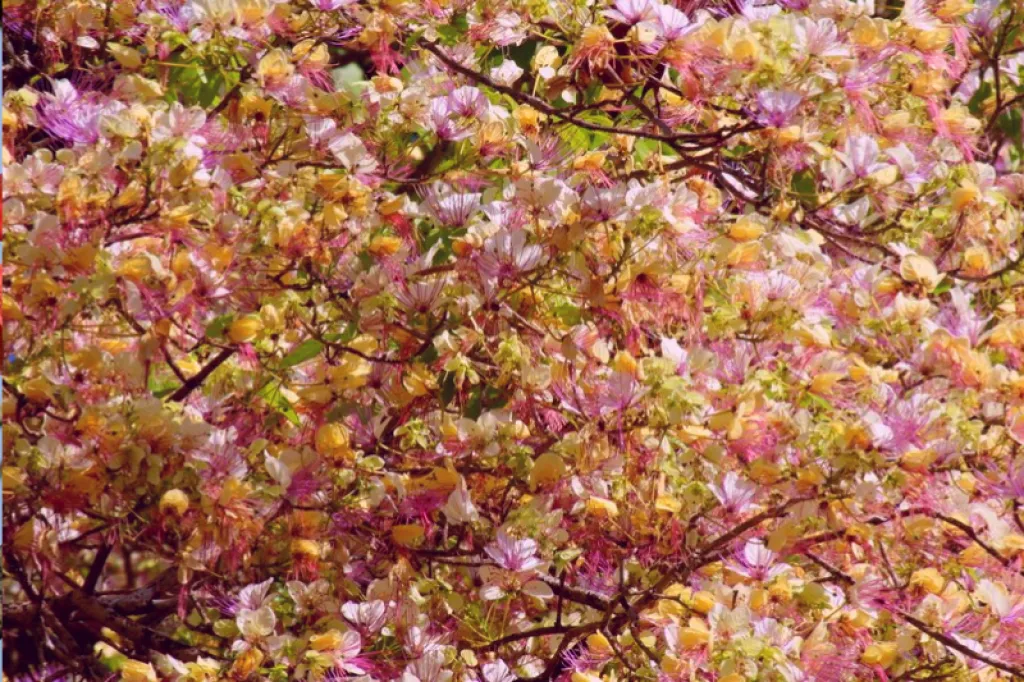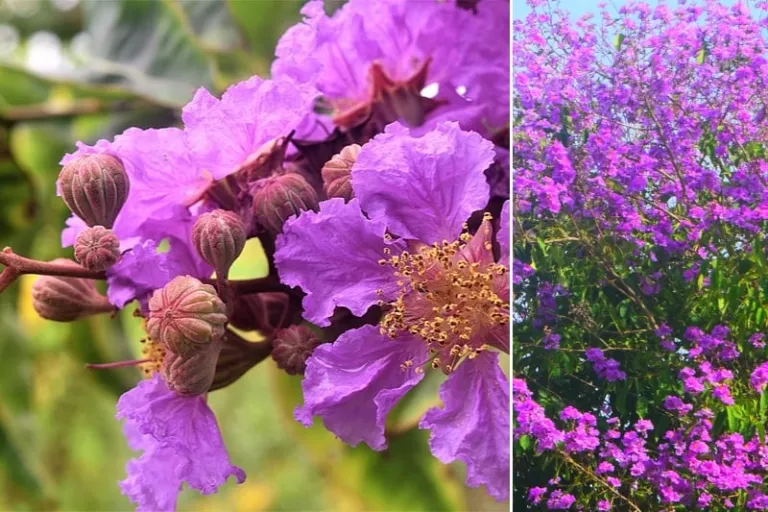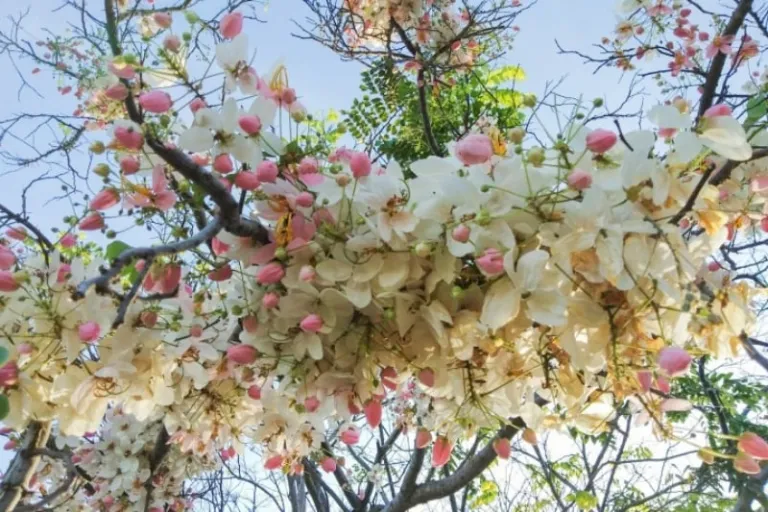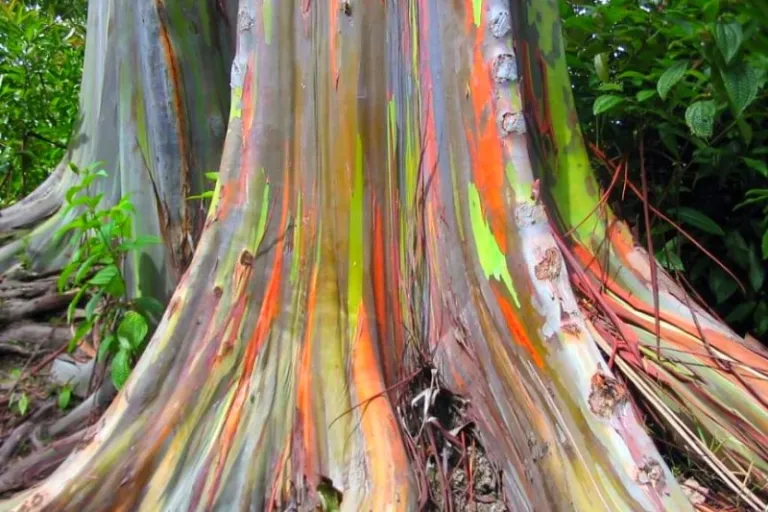Our favourite places to stay on this sleepy Cebu island.
7 Philippine Native Trees You Need On Your Feed

While spring may be a distant season for many, here in the Philippines, we’re fortunate to enjoy a rich and diverse natural landscape all year round. Among the country’s many natural treasures are its stunning Philippine native trees—vibrant, iconic, and perfect for nature lovers and photographers alike.
Whether you’re exploring parks, forests, or urban green spaces, keep an eye out for these remarkable trees that showcase the unique biodiversity of the Philippines.
Also read: Palawan’s Cherry Blossoms: Your Insta-Worthy Guide to the Balayong Bloom
1. Banabá tree
 Image credit: Marvin Bikolano | Wikimedia Commons
Image credit: Marvin Bikolano | Wikimedia Commons
Widely known for its herbal benefits, the Banabá tree has long been used as folk medicine. Many people claim that drinking Banabá leaves encourages weight loss and prevents diabetes, high blood, and other diseases. In fact, the Department of Health (DOH) promotes the Banabá herb for its benefits!
This flowering tree does not just boast of its therapeutic benefits. Before you take a sip of Banabá tea leaves, step back to appreciate its eye-catching lavender flowers. This tree definitely makes a good backdrop for photos as well!
Season: May to June
Where to find it: Widely grows around the Philippines; flourishes along riverbanks, swamps, and moist forests; UP Diliman; Palawan; Mindanao
2. Siar tree
 Image credit: Philippine Native Plants Conservation Society, Inc. | Official Facebook Page
Image credit: Philippine Native Plants Conservation Society, Inc. | Official Facebook Page
Largely used as an ornamental tree, especially in tropical destinations, the Siar tree blossoms with intricate-looking yellow flowers. Back in the time of the War of Independence, late president Emilio Aguinaldo planted a Siar tree in front of the Malolos Cathedral.
Today, that historical Siar tree is known as the Kalayaan Tree — a striking beacon of Philippine revolution. More of its kind were planted after that event; now you can even find Siar trees in the UP Washington-SyCip Garden, Intramuros, and Greenbelt.
Season: February to March
Where to find it: UP Diliman Washington-SyCip Garden; Malolos, Bulacan; Intramuros; Greenbelt; Subic; Olongapo
3. Malabulak Tree
 Image credit: (L) Dinesh Valke | Flickr; (R) Shiv’s fotografia | Wikimedia Commons
Image credit: (L) Dinesh Valke | Flickr; (R) Shiv’s fotografia | Wikimedia Commons
Every February, Malabulak trees unfailingly wow passers-by with its cup-shaped scarlet flowers. As the cold months kick in, the leaves of the Malabulak tree shed, making way for its fiery blossoms to create an illusion of a fully red tree. Malabulak trees are rarer than fire trees, although they pose a similar look. You’ll find them around Metro Manila, but most flourish in Bulacan.
Season: February
Where to find it: Widely grows around the coastal areas of the Philippines; Quezon City; Bulacan; Bohol; Nueva Ecija; Bataan; Rizal; Laguna; Camiguin
4. Salingbobong tree
 Image credit: Philippine Native Plants Conservation Society, Inc. | Official Facebook Page
Image credit: Philippine Native Plants Conservation Society, Inc. | Official Facebook Page
Admit it: You’re just as fascinated by cherry blossoms as the rest of us. Guess what? Philippine native trees can undeniably compete with those! Flashing white, yellow, and pink, the dainty Salingbobog tree is not only a lovely sight to behold — it also bears fruit rich in vitamin C. Traditionally, its leaves are also used to treat irregular menstruation.
Season: February
Where to find it: Flourishes along streams and near the sea; Northern Luzon; Masbate; Palawan; Mindanao; Sulu; UP Diliman
5. Narra tree
 Image credit: Jose Nicdao | Flickr
Image credit: Jose Nicdao | Flickr
Without a doubt, one of the Philippine native trees you recognise is the Narra tree. In elementary, all of us were taught that the Narra tree is large and strong. But have you ever taken a step back to admire the beauty of our Philippine national tree? The Narra tree has its seasons. During the cold season, it sheds its leaves; in the summer, its yellow flowers blossom.
Season: February to May
Where to find it: Widely grows around the Philippines
6. Balayong tree
 Image credit: Philippine News Agency | Official Website
Image credit: Philippine News Agency | Official Website
While the Balayong tree has gained the monicker “Palawan cherry blossoms,” this species actually belongs to the list of Philippine native trees. Homegrown in Palawan, the Balayong tree has become so widely-visited because of its resemblance to the sakura trees.
Now, a “cherry blossom” park stands in Puerto Princesa, inviting tourists and residents alike to admire the picturesque pink flowers. Every 4 March, Palawan celebrates the bloom of the Balayong tree with the Balayong Festival.
Season: March
Where to find it: Palawan
7. Bagras tree
 Image credit: MECU | Wikimedia Commons
Image credit: MECU | Wikimedia Commons
Philippine native trees don’t only boast of beautiful flowers. Case in point: The Bagras tree displays hues of greens, orange, and blues in its trunk. Hailing from the Southern region, the Bagras tree was initially known as the Mindanao gum. Now, it’s also called the Rainbow Eucalyptus. This tree flourishes in moist areas, particularly rainforests, and grows up to 246 feet tall.
Like other Philippine native trees, the Bagras tree balances fashion and function. It is used both as material for paper products and as folk medicine for asthma and coughs.
Season: All year round
Where to find it: Mindanao
Also read: Cherry Blossoms in the Philippines: Where to Find Them, and More!
Although we only have two seasons in the Philippines, our rich biodiversity certainly makes our country exciting! Let’s start showing our love to our Philippine native trees — new Instagram challenge, anyone? Don’t forget to tag us on Instagram and use our hashtags #TripZillaPH and #MakeTravelHappen!
Published at
About Author
Danielle Uy
Subscribe our Newsletter
Get our weekly tips and travel news!
Recommended Articles
10 Bantayan Island Resorts, Hotels, and Rentals for Your Tropical Escape 10 Best Banawe Restaurants for a Mouthwatering Food Trip in QC The promise of new flavours beckons from Banawe.
14 Best Credit Cards for Travel in the Philippines The only plastic we need for travel.
10 Best Mountain Cafes in the Philippines for Your Peak Coffee Experience Coffee date on the mountains, anyone?
10 Best Things to Do in Los Angeles Los Angeles is more than Hollywood stars. From hikes with killer views to beaches straight out of a rom-com, here are 10 must-do LA experiences for Filipino travellers or any wanderers in general!
Latest Articles
Thailand Eyes to Build Disneyland Instead of Casino Complex Thailand is considering bringing Disneyland to the country, replacing a previously proposed casino and entertainment complex.
US May Require Five Years of Social Media History for Tourists Are Filipino tourists affected?
3 Days in Okinawa: Everything We Saw, Did, and Ate in Japan's Southern Gem Here's your ultimate travel guide to Okinawa, Japan!
Cheap Domestic Flights Needed as Philippines Ranks Last in Southeast Asia Tourism Tulfo says local flights are too expensive and Filipinos deserve better travel deals.
The Quiet LA Travel Hack Travellers Should Know: Why Flying Into Ontario Airport is Way Better Here's how to get to LA without going through LAX!

